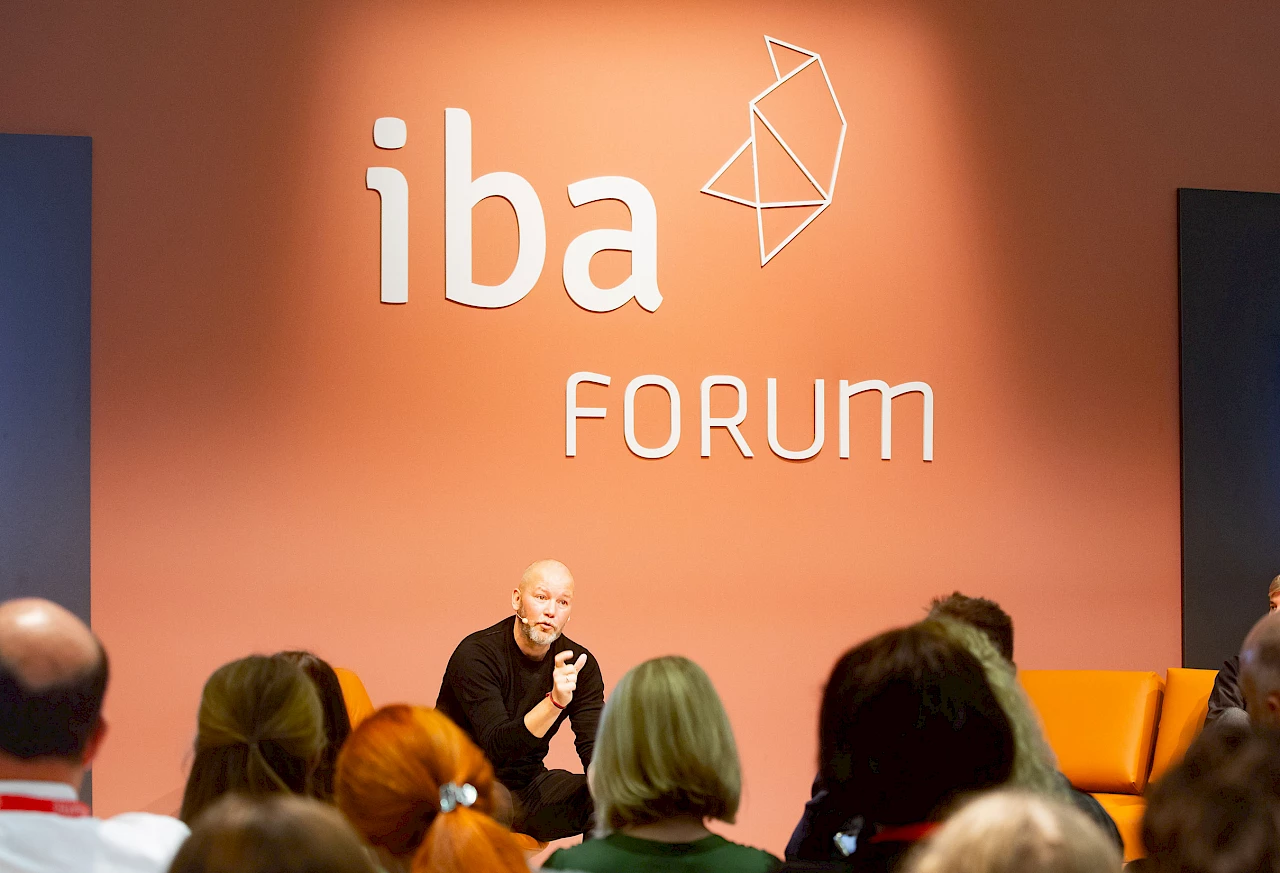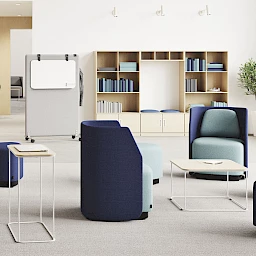IBA Forum offered a varied programme of lectures at ORGATEC. On the invitation of New Work SE and IBA, Dr Stefan Carsten, author and expert on mobility, spoke on 25 October 2022 about the future of work and its impact on urban and spatial development.
Knowledge work needs new spaces. Spaces that integrate our habitats and follow the idea of exchange and community. Many of our European neighbours are showing us how urban development can stage space in such a way that living, work and leisure can be arranged in such a way that all sectors can be reached within a short time. And let’s face it: workplaces are becoming increasingly hybrid, focusing on communication, mutual learning and creativity, and in future will often include cafés, studios or public spaces in addition to the classic office.
Redefining urban development and workspaces
For Dr. Stefan Carsten, urban development will increasingly combine different offers in a small space everywhere and as a result make mobility more flexible. Concepts such as the 15-minute city or the 15-minute region, which allow us to reach our working, living and leisure spaces within a short time, and also the Swedish model of the one-minute city will lead to a move away from monofunctional spaces towards a redefinition of suburban commercial areas in the future. New headquarters will emerge that correspond to the modern principle of the corporate city, like the new Metro Campus in Düsseldorf. The headquarters as a location where employees like to get together with their colleagues, workplaces that invite people to work and attractive public spaces that are in the direct vicinity and inspire employees and society alike are cornerstones of the future of work.
“In the future, we will work in a campus. We don’t need all these functionalities in the office, but we will serve ourselves on the city, in the city.” Dr Stefan Carsten
Learnings from pilot projects
The 5‑minute city concept in Nordhavn, a district of Copenhagen, is the largest city building project in Europe and an international model for sustainable urban development. Nordhavn was designed as a “city of short distances”, where shops, institutions, workplaces, cultural facilities and public transport can be reached within five minutes from anywhere in the neighbourhood. 40,000 residents live in Nordhavn close to the city centre and yet close to nature. There are only 1,800 parking spaces for cars in the 5‑minute city. The rest of the mobility is taken care of by bicycle, pedestrian traffic, an elevated railway and autonomous shuttles that take residents to work or home. What in terms of transformation in urban development and mobility is still considered a dream of the future in some parts of Germany, is already a living reality in Nordhavn.
Young generation as motor of new mobility concepts
The transformation of mobility concepts is also progressing in Germany. In the process, younger generations in particular are placing new demands on spaces of mobility, which in the future will lead to the emergence of mobility hubs, inner-city spaces that provide us with various mobility options, and the creation of a variety of alternative mobility offers, keyword: Seamless Mobility. In the working world, this also means in particular the demand for mobility budgets instead of company cars and parking spaces, which employees can freely dispose of and individually design their personal mobility.
The trend study “Mobility Zeitgeist” on the mobility needs of generation Z, which Stefan Carsten conducted in 2020 in cooperation with Ford with a sample of more than 2,000 randomly selected people in the target group of 18 to 23 year-olds, concludes that mobility plays a very important role for Generation Z overall, although gen Z associates with mobility by 64% the degree of flexibility, by 58% the degree of independence and by 54% the degree of freedom. Specifically, walking is among the five most important types of mobility for 59% of all respondents, using public transport for 47%, cycling for 27% and taking the train for 26%. The car remains very important with 44%, but is often used in the context of car sharing. This means that the car is still part of the mobility network, but its importance is declining compared to the importance it enjoys, especially among the older generations.
Mobility hubs also reflected in workspaces
Diversity will also be reflected in our workspaces in the future. LOLA, the Locals Logistic Lab in Hamburg, is an example of how work can be designed in the near future. A bicycle lane leads directly into the modern building, which is located on a highly frequented street. The first level includes a bicycle station, and above that there are several levels with offices, flats and a roof garden that is accessible to all people from the neighbourhood. No matter what the future of work will look like in concrete terms, it is clear that we will rethink work and create new spatial offers.
“Mobility changes spaces. This mobility has an effect back on our workspaces.” Dr Stefan Carsten




 Jasmin Najiyya
Jasmin Najiyya 

